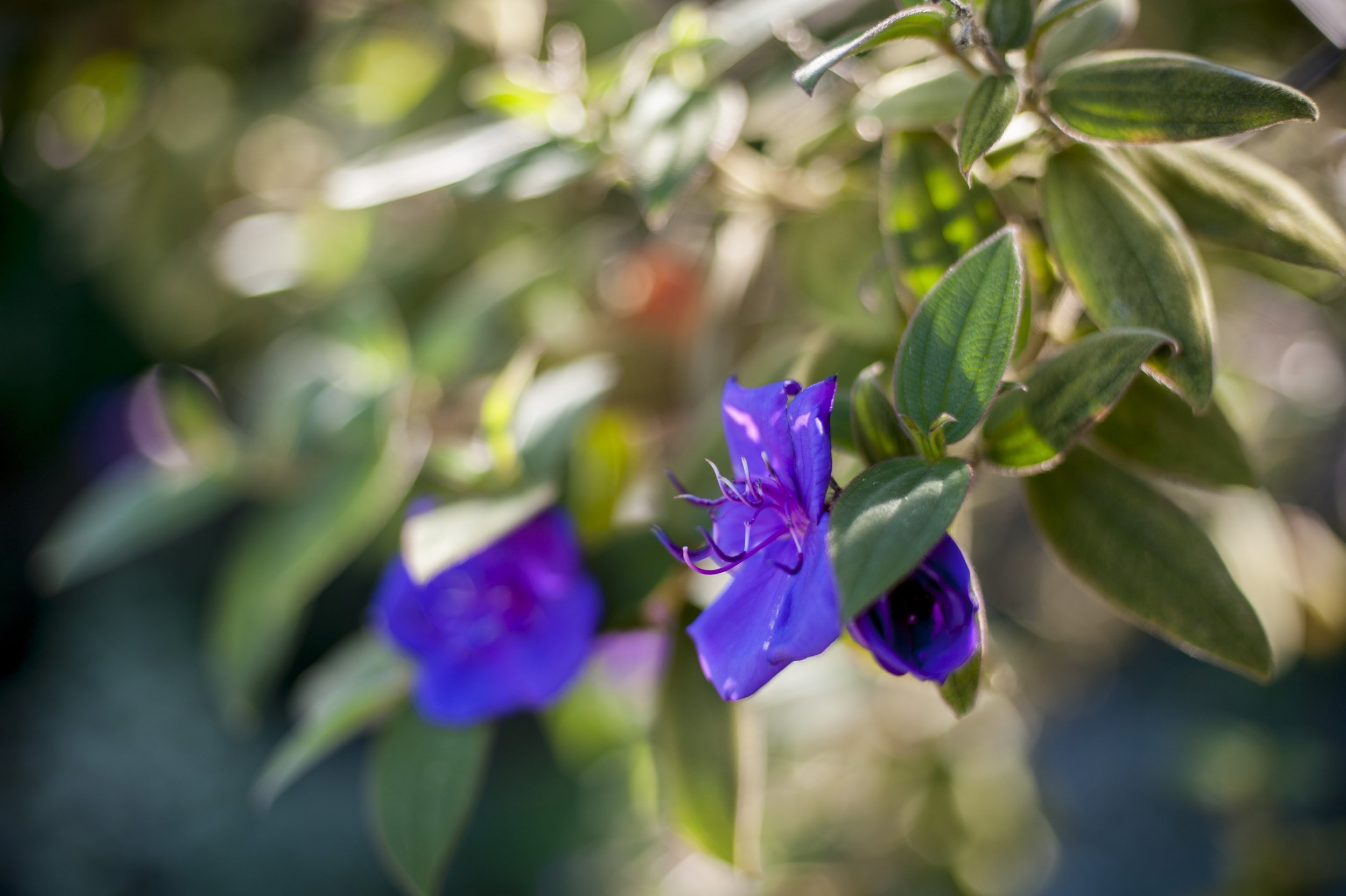Choosing Plants for the Border
/It’s November, and our warm sunny days give way to the first predictions of rain. In the 24 years I have been gardening in San Francisco, many Halloween pumpkins, ripened in the heat of October, have ended their Jack-o-Lantern lives in cold rainstorms.
For gardeners, this is a time for action. The ideal planting time for trees, shrubs, and perennials is now, with five to seven cool, rainy months ahead. Plants set out as the rainy season begins can establish deep root systems before the stress of the first hot dry days, usually in May.
This is also a great time to take a long, thoughtful look at the garden. Many San Francisco gardens are full of plants that bloom in late winter and spring, but the sequence of bloom begins to falter in early summer, and by fall the garden is tattered and colorless. Part of the art of gardening is planning for a sequence of bloom and foliage effects that are continuously unfolding and renewing themselves all year long.
Many gardeners are inspired in springtime, and go to the nursery to fill their shopping carts with new plants. Since most nurseries sell plants in bud and bloom, the result is gardens full of springtime bloomers, and little to interest the eye in late summer and fall.
For a change of pace, inspire yourself by dropping by Garden for the Environment. Many wonderful, hardy plants, appropriate to our Mediterranean climate, are blooming now at GFE. Our borders are wild with color and dramatic foliage effects. Some reliable, gorgeous performers in bloom now are below.
Tibouchina urvilleana (Princess flower).
Tibouchina urvilleana (princess flower): Enter GFE at the northern 7th Avenue gate, and directly in front of you in an oval planting bed the dominant small tree is Tibouchina. A Brazilian native with showy purple flowers, this plant blooms lightly all year when it is thriving, but puts on its biggest display in fall. This plant does best with regular water, roots in shade, tops in sun.
Plectrantus argentatus ‘Silver Shield:’ Plectranthus is a mint-family group of plants, widespread in tropical regions of the world. Many prefer light shade and can take some dryness, making them very useful in San Francisco gardens. You can see Plectranthus argentatus ‘Silver Shield’ blooming beautifully now on the left side of the southern 7th Avenue gate as you enter the garden on the stairs.
Asclepias curassavica (blood flower): Milkweeds are among the favorite nectar plants of some butterflies, including Monarchs. This milkweed, from South America, is blooming now at GFE. Enter the garden on Warren and walk straight ahead until you are between two garden beds. On your left is a plant with small star shaped orange flowers. If you are lucky, you may see a butterfly nectaring there.
Leonotis leonurus, (lion’s tail) in the 7th Avenue border, between the two gates, look for a huge clump of erect, dark-green stalks topped with whorls of bright orange fuzzy flowers. A sun-loving mint-family member from South Africa, this plant requires little or no water once established.
Leonotis leonurus (Lion’s tail).
Many other wonderful plants are in bloom now in our garden. Salvias and grasses are putting on their best show. Don’t forget, when planning your fall planting to include some plants which add structure and foliage color to the garden whether or not they are blooming. Phormium, Coprosma, and Carex are some plants which we use this way. Next month’s column will focus on these plants, and how they give a garden border “good bones.”
Happy Planting!





